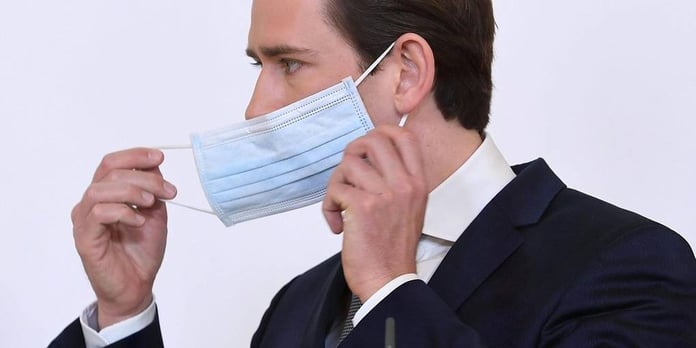
Vienna – After Easter, the slow path back to normal should begin in Austria in the Corona crisis. Chancellor Sebastian Kurz (OVP) announced in Vienna that the goal is to allow small shops and DIY megastores with garden centers to reopen on April 14th.
From May 1st, all shops, shopping centers, and hairdressers should be allowed to reopen. Hotels and restaurants should follow at the earliest in mid-May.
The exit restrictions will be extended until the end of April and the schools will remain closed until mid-May. Events should not take place until the end of June. In addition, wearing a face mask will not only be mandatory in supermarkets and drug stores in the future.
“The quick and restrictive reaction now gives us the opportunity to get out of this crisis faster,” said Kurz. “But only if we continue to consistently adhere to the measures and stand together as well as we have done so far.”
Especially with a view to Easter, Kurz asked people to avoid further social contacts and keep a distance from each other. He added: “Stay together with the people you live with.”
Austria is one of the first European countries to try to loosen up its measures in the fight against the coronavirus right after Easter. In Denmark, too, Prime Minister Mette Frederiksen has announced that he will probably want to gradually reopen the country after Easter. However, she has not yet presented a precise plan. In the Czech Republic, minor exemptions for trade are currently being discussed, but the minority cabinet is very controversial on this issue.
Austria has been running at a minimum since March 16: With the exception of grocery stores and drugstores, the retail trade is closed and all bars and restaurants are also closed. In addition, exit restrictions apply; standing together in groups is not permitted.
In the particularly affected federal state of Tyrol, with a few exceptions, a quarantine applies to all 279 municipalities until Tuesday. Since March 18, people have only been allowed to leave their place of residence for good reason. The full quarantine was supposed to last until Easter Monday, but on Tuesday the state government announced the early easing. In the state of Salzburg, too, communities are under quarantine, including the Saalbach-Hinterglemm, which is popular with winter sports enthusiasts.
Finally, it became clear that these measures are obviously working: the number of confirmed infections with Sars-CoV-2 has only been increasing slowly for several days, the number of COVID-19 patients in the intensive care units has stagnated. As of Monday, 8:00 a.m., there were 12,008 confirmed infections in Austria – this corresponds to around 136 cases per 100,000 inhabitants.
The daily rate of increase in new infections was recently around two percent – compared to 20 percent and more at the beginning of the measures in mid-March. Since Saturday, the number of people recovering has also increased faster than that of the newly confirmed cases. Less than 3 out of 100,000 people in Austria are newly infected with Sars-CoV-2 every day.









